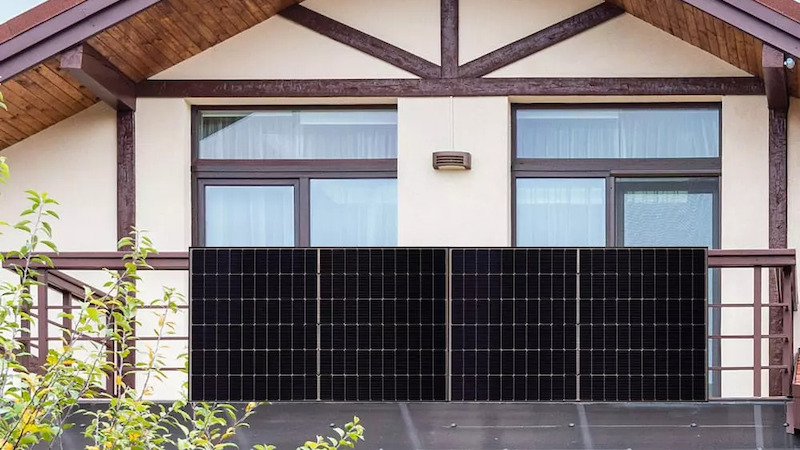How does a balcony power plant actually work?
It is estimated that more than 500,000 balcony power plants will be connected to the grid by the end of 2023. Reason enough to take a closer look at how mini solar systems work.
Balcony power plants are becoming increasingly popular thanks to rising electricity prices. As a study the University of Applied Sciences in Berlin shows that sales of the mini solar systems were already around 190,000 at the end of 2021.
Since the outbreak of the Ukraine war in spring 2022, demand has even increased. experts According to this, more than 500,000 balcony power plants will be connected to the grid in 2023. But how does the technology actually work?
Contents
How does a balcony power plant work?
In short, a balcony power plant is a mini solar system. It generates electricity using solar energy. However, the term “power plant” is a bit misleading. Because a balcony power plant consists usually just one or two photovoltaic modules including an inverter. This can be a Schuko or a Wieland plug.
The inverter converts the generated direct current into alternating current, which is also used by commercial electrical devices. A cable leads from it, which in turn is connected to a power cable.
The plug at the other end is then plugged into a normal socket on the balcony or in the apartment. This allows a balcony power station to be connected to the home network. As soon as the sun hits the modules, the system generates electricity and can supply your household with energy independently.
This is how the balcony power plant differs from a photovoltaic system
Although just like the photovoltaic (PV) system, a balcony power plant uses solar energy to generate electricity, both have systems different properties and areas of application.
Balcony power plants are usually smaller and have a maximum output of up to 800 watts. They are designed for direct consumption. In addition, laypersons can also install the modules.
PV systems, on the other hand, can potentially generate much more electricity and are therefore also used in industry. The installation also requires professional expertise.
In addition, balcony power plants usually do not have an integrated storage system, while powerful PV systems with more than two modules often have an electric battery. For example, they can also supply energy at night when the sun is not shining.
How does the storage of a balcony power plant work?
People who install a balcony power plant can use the generated electricity directly. Excess energy usually flows automatically into the general power grid. However, this is not normally remunerated.
Alternatively, users can also choose to use the electricity generated save on computer. However, the purchase of a corresponding storage device can quickly become expensive. The price difference can be in the four-digit range.
Free online tool calculates estimated consumption
Consumers should therefore consider carefully whether the excess amount of electricity is large enough to invest in a memory module. If you are not sure which variant is the right one for your own use, you can use one developed by the HTW Berlin Independence Calculator Use it to calculate your own degree of self-sufficiency and the probable share of self-consumption.
Sample calculations have shown, however, that the share of self-consumption can be increased by adding a storage tank to a balcony power plant. However, the degree of self-sufficiency is still low.
How to install a balcony power plant
No special prior knowledge is required for the installation of balcony power plants. This is also one of the biggest advantages over photovoltaic systems. The modules can either be attached to the balcony railing, facades or garden shed roofs.
They can also find their place on flat or pitched roofs – or even on the garden table. A southern orientation, an inclination of the modules of 30 to 40 degrees and mounting in a place that does not provide much shade are ideal.
Politicians support the purchase of balcony power plants
Since January 2023, balcony power plants in Germany have been value added tax freed. There are also more and more subsidy programs and subsidies for the purchase of plug-in solar systems. For example, some cities and municipalities already pay part of the acquisition costs.
However, it should be noted that some funding programs require that the application be submitted before the actual purchase. It can also happen that individual municipalities expressly require the installation of Wieland connectors.
Also interesting:



